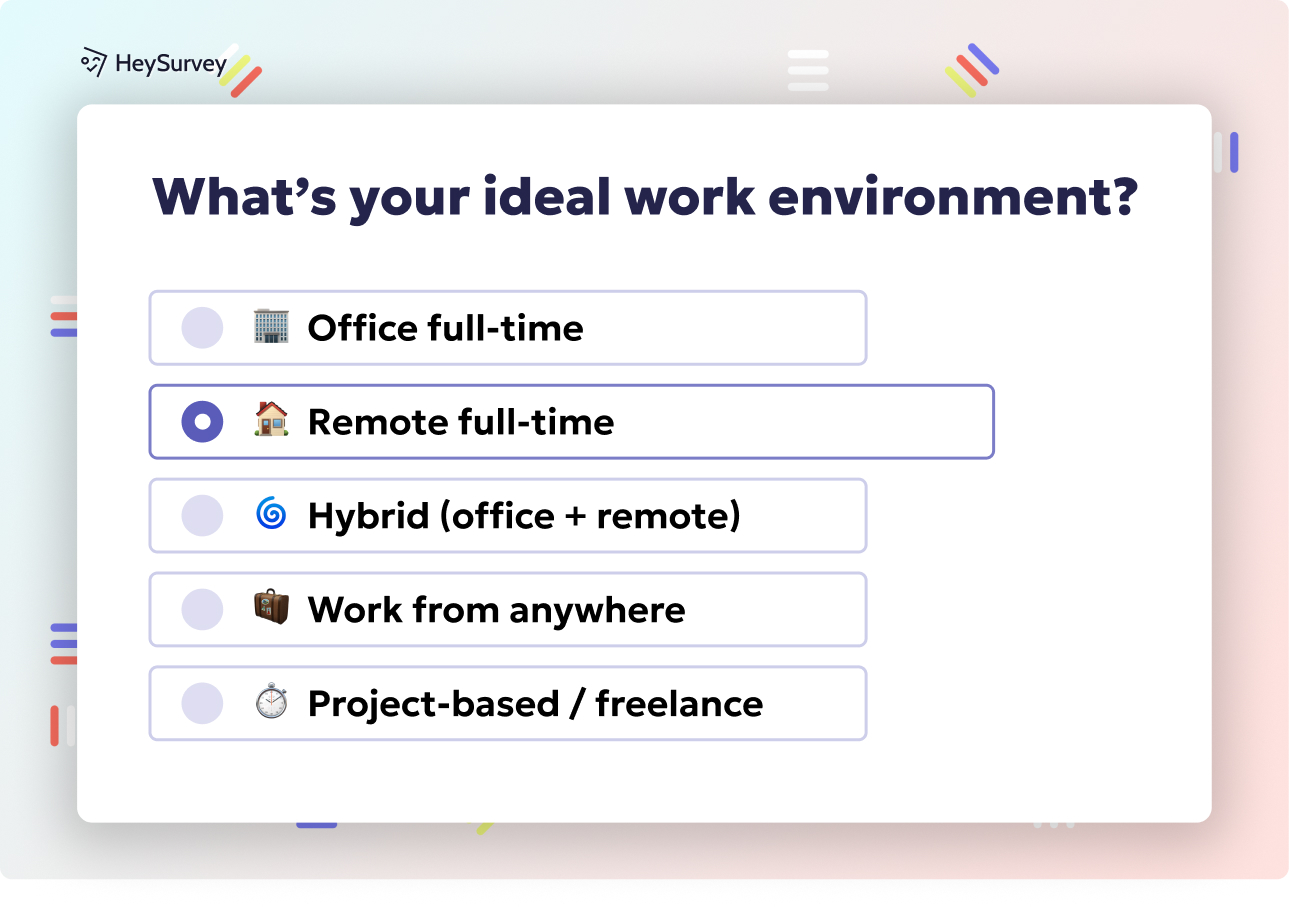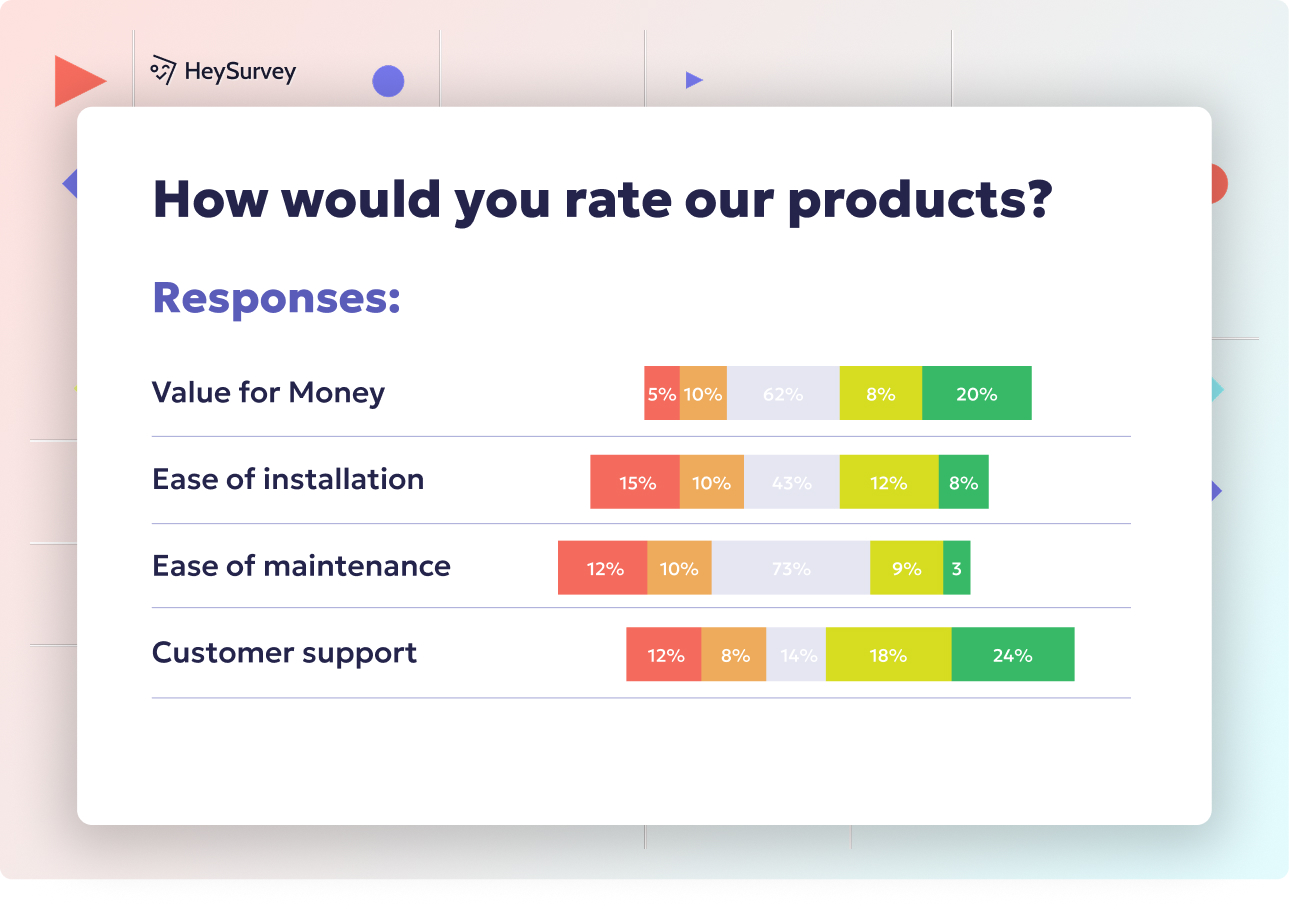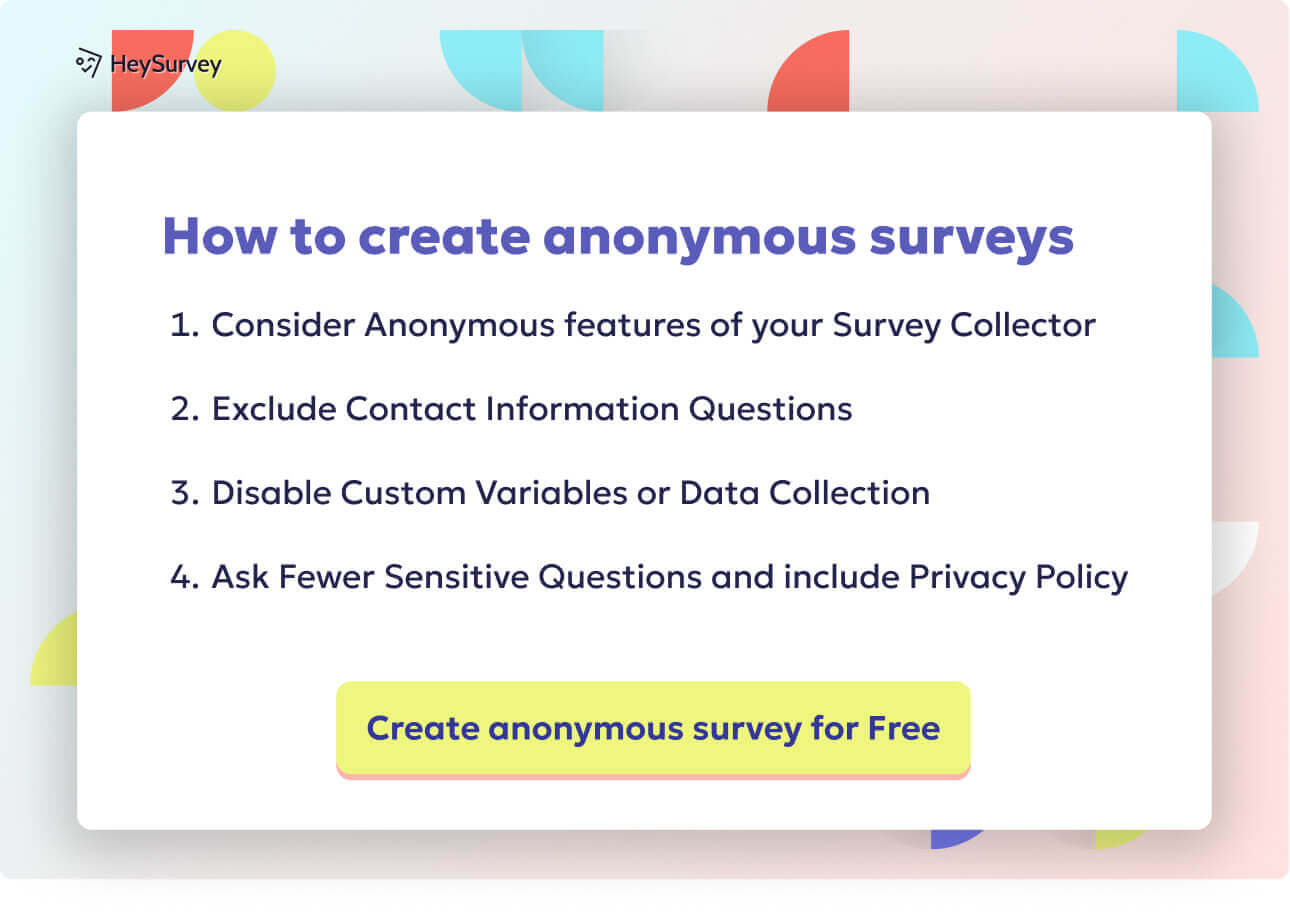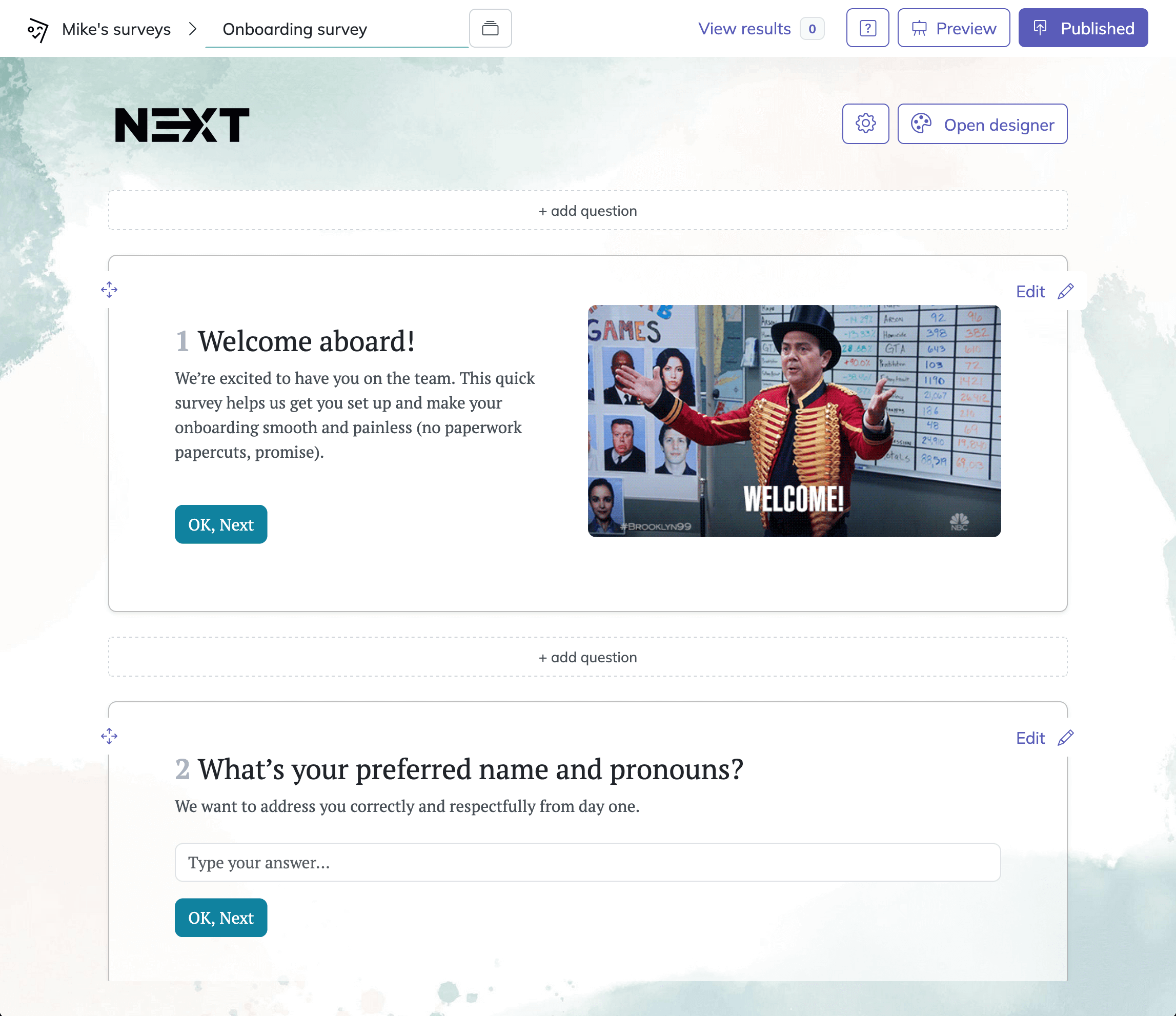32 Drug Survey Questions for Students: Ultimate Guide & Samples
Explore 30 insightful drug survey questions for students covering knowledge, attitudes, behavior, peer pressure, access, and risks.
Drug surveys are a secret weapon in the toolkit of schools and health agencies. These questionnaires reveal what students really know, think, and do about substances, helping to shape smarter programs. They work best before launching prevention campaigns, right after health awareness weeks, or as a pulse check during annual reviews. Let’s break down the seven main types of student drug survey questions—from knowledge checks to measuring peer pressure—and serve up actionable sample questions and pro tips to make your next survey shine.
Knowledge & Awareness Question Type
Why and When to Use
Kicking off a drug prevention program without checking students’ baseline knowledge is like baking without a recipe. Knowledge and awareness questions help survey creators find out what students already know—or don’t—about substances, laws, and risks. This is especially important at the goal-setting phase, before anyone’s fixed on what needs to be taught.
It’s most powerful to use these questions at the very beginning of a program or lesson cycle. That way, the results can guide instructors to zero in on the biggest knowledge gaps. If students already know that “mixing alcohol with prescription meds is risky,” there’s no need to waste precious time repeating it.
Designers can also use this info to: - Shape new content about drugs emerging in the community - Update outdated lessons about vaping or edibles - Tailor workshops to a specific grade level or campus need
Knowing where students stand upfront can make everything that follows way more effective.
Five Sample Questions
- Which of the following substances do you consider to be classified as opioids?
- True or False: Vaping nicotine is less addictive than smoking cigarettes.
- At what age is it legal to purchase cannabis in our state?
- Name two short-term health effects of prescription stimulant misuse.
- Where would you go to verify if a pill you found is safe to take?
Interactive, game-based learning significantly enhances adolescents' health awareness and knowledge. (arxiv.org)

Creating a student drug survey with HeySurvey is as easy as pie—no tech wizardry required! Follow these simple steps and you’ll have your survey ready to roll in no time:
Step 1: Create a New Survey
First, open HeySurvey and start a new survey by clicking the “Create Survey” button.
Choose to begin with a pre-built template tailored for student drug surveys, or start from a blank slate if you prefer full DIY control.
Give your survey an internal name so it’s easy to find later (this name won’t appear to respondents).
Voilà! Your empty survey canvas is ready.
Step 2: Add Questions to Your Survey
Click Add Question at the top or between existing questions.
Select the question type that fits your data needs—like Multiple Choice for attitude questions or Scale for Likert-type responses.
Type your drug survey questions (feel free to use the handy sample questions provided in this article).
Mark important questions as required to ensure no one skips vital items.
You can add images or descriptions to make questions clearer or more engaging.
Use branching logic if you want the survey to follow different paths based on students’ answers (like skipping future use questions if a student says they never tried a drug).
Repeat adding and customizing until your question list is complete and flows smoothly.
Step 3: Publish Your Survey
Preview your survey using the Preview button to make sure everything looks crisp on different devices.
When ready, hit Publish. You’ll need to create a free HeySurvey account or log in if you haven’t already.
Once published, you get a shareable link to send out to students or embed on your school’s website.
Responses start rolling in immediately and are saved in your account dashboard.
Bonus Step A: Apply Branding
Add your school or organization’s logo to build trust and reinforce identity.
Customize colors, fonts, and backgrounds from the Designer Sidebar to match your brand style.
This makes the survey look professional and familiar, boosting student engagement.
Bonus Step B: Define Settings
Set start and end dates for when the survey should be active.
Limit the maximum number of responses to keep control over data collection.
Add a redirect URL to guide respondents to a webpage after finishing (like educational resources or a thank-you message).
Decide if students can view aggregated results—useful for transparency and awareness.
Bonus Step C: Use Branching for a Personalized Experience
Customize question order based on responses to make the survey more relevant.
For example, skip questions about drug use frequency for students who say they never used any substance.
Branching helps reduce survey fatigue and keeps students engaged till the end.
Ready to dive in? Click the button below to start your student drug survey now with a ready-made template on HeySurvey and gather valuable insights quickly!
Attitude & Perception Question Type
Why and When to Use
Understanding student attitudes and beliefs is basically getting a sneak peek inside their heads. Are they convinced that “everyone vapes?” Do they see marijuana as harmless? These questions uncover the value systems and social norms that shape real choices.
Crafting the right tone for a prevention campaign is only possible with this insight. Want to know if recent health fairs, classroom visits, or a trending TikTok campaign actually changed anyone’s mind? Pop in some attitude and perception questions post-campaign and watch for the shifts.
These questions reveal: - Whether risky behaviors are normalized or seen as “no big deal” - Which substances students view as dangerous or “safe” - How much students trust adults or the school to respond
If students feel school staff don’t take threats seriously, any rules or education coming their way might just fall flat. It’s all about connection before correction.
Five Sample Questions
- How wrong do you think it is for someone your age to drink alcohol every weekend? (Likert scale)
- Using marijuana occasionally is a normal part of teenage life. (Strongly agree → Strongly disagree)
- People who use prescription painkillers without a doctor’s order are making a risky choice.
- My school takes drug misuse seriously.
- Getting caught with drugs would significantly affect my future plans.
A study found that 84% of French university students overestimated tobacco use prevalence among their peers, highlighting significant misperceptions in substance use norms. (bmcpublichealth.biomedcentral.com)
Behavioral Frequency Question Type
Why and When to Use
What’s more helpful than knowing what students think? Knowing what they actually do. Behavioral frequency questions capture current and past use. This makes them a goldmine for tracking trends, understanding where intervention is needed most, and measuring whether prevention programs are doing the trick.
Prevalence statistics depend on honest answers. So, these questions definitely work best if students see the survey as anonymous and confidential. That means no names, no ID numbers, and no way for responses to come back to haunt anyone.
They’re perfect for: - Annual audits comparing rates year to year - Schools or districts seeing sudden spikes in local substance issues - Programs needing hard evidence to secure funding
These questions help separate rumor from reality—because sometimes, the loudest voices online aren’t the most truthful ones.
Five Sample Questions
- During the past 30 days, on how many days did you drink alcohol?
- How often have you used prescription stimulants without a prescription in the last 12 months?
- Have you ever tried vaping THC? If yes, how many times?
- At what age did you first try any illegal drug?
- How many of your last 10 social events involved substance use?
Intent & Future Use Question Type
Why and When to Use
Wouldn’t it be handy to predict the future? These questions come pretty close. Exploring intent and likelihood of future use often lets schools and public health teams spot problems—and opportunities—before they blow up into real emergencies.
Timing is everything. Deploy future-use questions before those peek-risk times such as spring break, prom week, or the start of college. They’ll flag students who might need extra attention, support, or resources to handle pressure in risky moments.
This strategy is also smart because: - It lets teams adjust communications or assemblies just in time - You can prioritize who might benefit most from community referrals or small-group mentoring - Predicting risk is much easier with students’ honest expectations in hand
Think of these as your “early warning system”—not a crystal ball, but maybe the next best thing.
Five Sample Questions
- Do you think you will drink alcohol in the next 30 days?
- How likely are you to try cannabis in the coming year?
- If offered prescription painkillers by a friend, would you take them?
- What is the chance that you will vape nicotine this weekend?
- Rate your likelihood of using any illicit drug while at college.
Asking students about their current drug use in surveys does not increase their future substance use. (pubmed.ncbi.nlm.nih.gov)
Social Influence & Peer Pressure Question Type
Why and When to Use
Middle school and high school are prime time for peer pressure to flex its muscles. These questions give crystal-clear insight into how much social circles shape choices about drinking, vaping, or experimenting.
Whether the pressure’s real, imagined, or just a side effect of wanting to fit in, understanding this allows educators and leaders to tailor responses. Peer-led programs, buddy systems, and strong positive-norm messaging can all be targeted where peer influence is strongest.
Use these questions especially when: - Introducing new mentorship or peer ambassador programs - Trying to bust persistent myths like “everyone’s doing it” - Supporting youth leaders to push positive behaviors
Social influence is a two-way street—it can be a liability, but also a secret weapon for better choices.
Five Sample Questions
- How many of your closest friends have tried alcohol?
- I feel pressure to use drugs to fit in with my friends.
- My friends would think less of me if I refused drugs.
- Most students at my school use marijuana.
- I have been offered drugs at a party in the past six months.
Access & Availability Question Type
Why and When to Use
Knowing what drives temptations isn’t enough; it matters a lot whether substances are actually accessible. Access and availability questions dig into how easy it is for students to get their hands on risky substances. These responses can point administrators and law enforcement exactly where to act—without just guessing.
This question type is a must before shifting campus security, adjusting vending policies, or launching neighborhood partnerships. It also tells prevention teams if resources (like safe disposal sites or education campaigns) are actually needed.
Other ways schools and organizations use this data: - To decide where more adult supervision or security might be needed - To identify local businesses or neighborhoods as possible “hot spots” - To spot emerging trends, like online purchases of vaping supplies
Knowing if substances are just a click, walk, or friend away changes the strategy completely.
Five Sample Questions
- How easy would it be for you to get alcohol if you wanted it?
- Where do students most often obtain prescription drugs for nonmedical use?
- Can you purchase vaping supplies within walking distance of school?
- Do you know someone who sells illegal drugs in your neighborhood?
- Rate the difficulty of ordering THC products online.
Consequences & Risk Perception Question Type
Why and When to Use
If students don’t see any real consequences or dangers, even the best prevention messages can bounce right off. Questions about consequences and risk help reveal if students truly get the serious potential fallout—health-wise, academically, or legally.
These questions are most potent right after big events. Policy changes, major incidents, or media coverage can all stir up awareness (or confusion). That’s a golden opportunity to test whether your risk communication hit home.
Schools use this insight to: - Refine messages, so consequences are both clear and personalized - Find out where students are underestimating risk (and beef up efforts accordingly) - Support more targeted counseling for at-risk groups
When the myths are larger than life, these questions bring reality into focus.
Five Sample Questions
- Using cocaine one time can lead to addiction. (True/False)
- How harmful do you think binge drinking is to your health?
- If caught with drugs at school, what disciplinary action do you expect?
- Driving after using cannabis increases accident risk.
- Missing classes due to a hangover negatively affects grades.
Best Practices: Dos and Don’ts for Crafting Student Drug Surveys
No matter how brilliant your questionnaire, a few best practices will make or break the results. If students don’t feel safe or the questions are confusing, you’ll lose honesty and engagement.
Here’s the winning formula, boiled down:
- Do ensure anonymity and confidentiality; make sure no identifying info makes students clam up.
- Don’t use student names, IDs, or emails; even birth dates can discourage the truth.
- Do use age-appropriate, everyday language; skip the medical jargon that could trip up younger or less fluent students.
- Don’t stuff the survey with words students would never use or understand.
- Do pilot your questions with a small focus group to iron out misunderstandings and double meanings.
- Don’t assume what works for one region or school works everywhere; slang and norms shift fast.
- Do aim for a mix of question types for well-rounded data—but keep it short!
- Don’t let surveys drag on for more than 15-20 minutes or students lose focus.
- Do always comply with ethical rules and parental consent; inform students about why the survey exists and what will happen to the results.
- Don’t skip approvals from the school board or institutional review bodies, or skip crucial permissions.
Design your survey with care, and you’ll get insights you can trust—plus, maybe even some grins from students who feel heard.
Drug surveys are small tools with outsize impact. With the right mix of question types, they help educators and leaders tune in to what’s happening below the surface. Prioritize clarity, honesty, and respectful engagement, and surveys will do more than just gather data—they’ll help build the foundation for smarter, safer schools. Use these tips and sample questions, and you’ll be ahead of the curve (and your next campaign will thank you).
Related Student Survey Surveys

31 Survey Questions Examples for Students to Improve Learning
Discover 28 survey questions examples for students across 6 key types to boost engagement, feedba...

29 Class Survey Questions: Proven Templates for Every Stage
Discover 40+ proven class survey questions with detailed templates for every course stage to boos...

30 Survey Questions for Students: 6 Types & When to Use Them
Explore 6 powerful survey types with 30+ sample survey questions for students to boost engagement...
